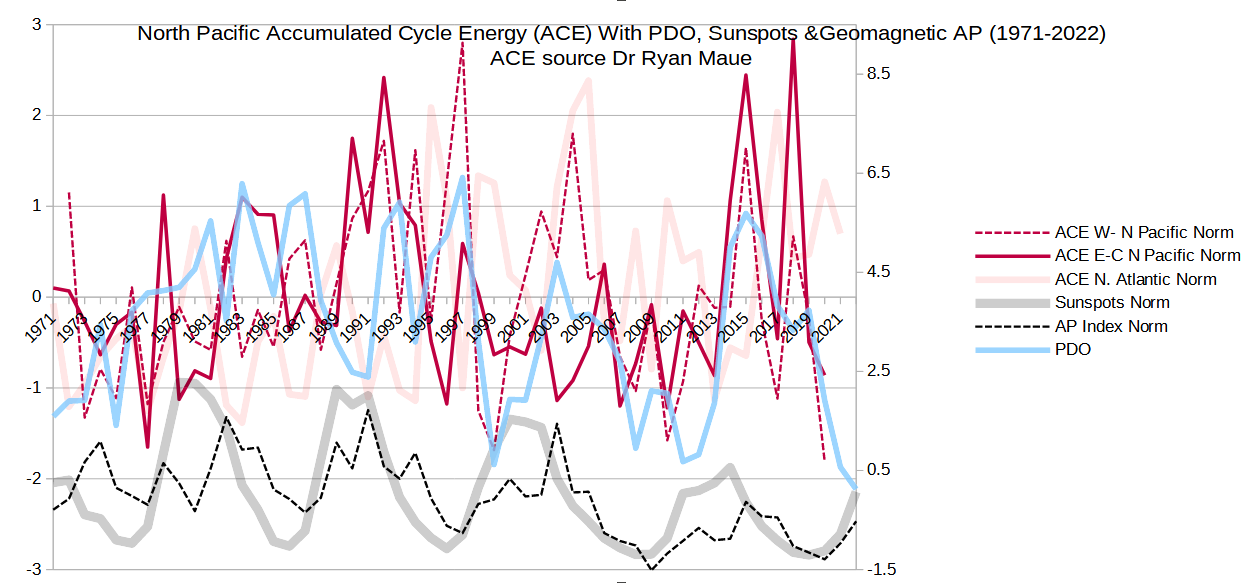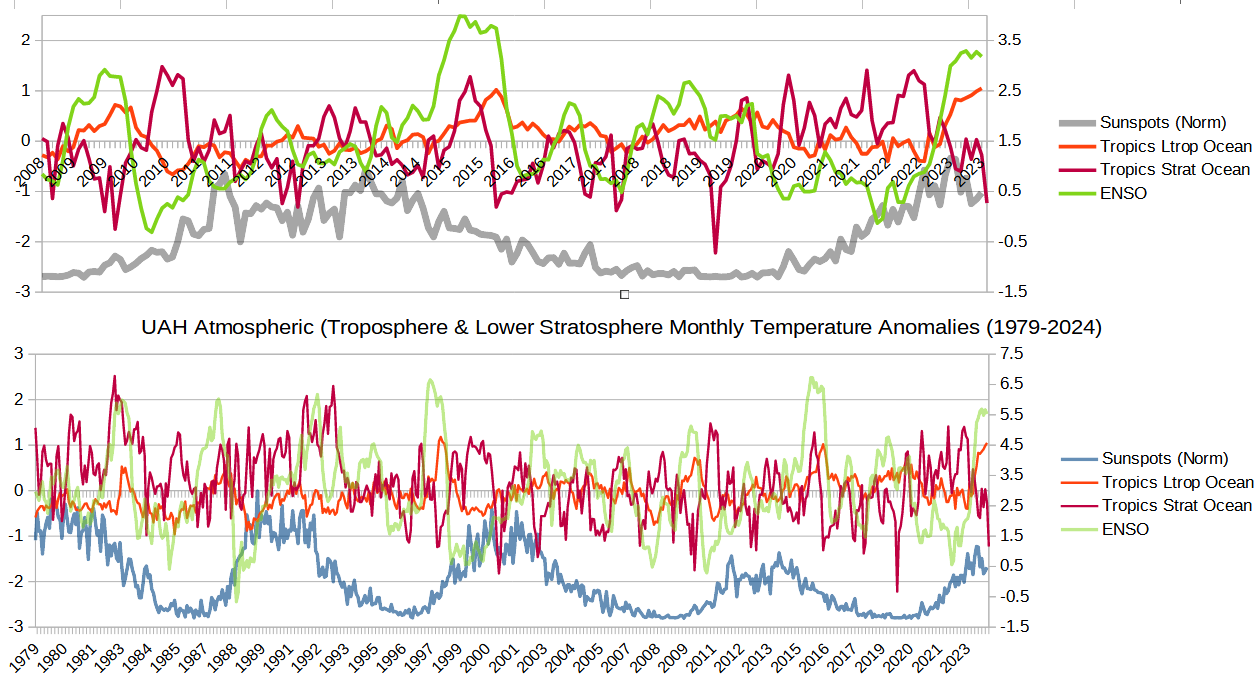|
|
Post by Sigurdur on Apr 17, 2024 21:56:14 GMT
I don't believe it doesn't as well.
|
|
|
|
Post by acidohm on Apr 18, 2024 4:40:03 GMT
Did this one hit the stratosphere? Shall we expect a notch down in temperatures? People tell me that this huge geothermal plug that underlies Indonesia and others couldn't possibly contribute significant heat to that whole area of ocean. I'm not sure I believe it.  Night time eruption so no immediate visual on height, but seen estimates of up to 1.5 miles, so, way short. Unless someone shows otherwise, 1.5 miles isn't even impressive in the scheme of things. |
|
|
|
Post by missouriboy on Apr 18, 2024 14:00:09 GMT
Did this one hit the stratosphere? Shall we expect a notch down in temperatures? People tell me that this huge geothermal plug that underlies Indonesia and others couldn't possibly contribute significant heat to that whole area of ocean. I'm not sure I believe it.  Night time eruption so no immediate visual on height, but seen estimates of up to 1.5 miles, so, way short. Unless someone shows otherwise, 1.5 miles isn't even impressive in the scheme of things. Quite right. But as in many things, the accumulation of small, medium and large events at decreasing intervals have their effects. I haven't expended the effort ... but perhaps we need a new cumulative metric akin to ACE (Accumulated Cyclone Energy). We could call it AGE (Accumulated Geothermal Energy). What would it show?  |
|
|
|
Post by missouriboy on Apr 18, 2024 14:26:19 GMT
Did this one hit the stratosphere? Shall we expect a notch down in temperatures? People tell me that this huge geothermal plug that underlies Indonesia and others couldn't possibly contribute significant heat to that whole area of ocean. I'm not sure I believe it.  Night time eruption so no immediate visual on height, but seen estimates of up to 1.5 miles, so, way short. Unless someone shows otherwise, 1.5 miles isn't even impressive in the scheme of things.
55,000 feet?
|
|
|
|
Post by phydeaux2363 on Apr 18, 2024 16:25:42 GMT
Equatorial tropopause is what? 70,000 feet? So close.
|
|
|
|
Post by missouriboy on Apr 18, 2024 20:26:52 GMT
Equatorial tropopause is what? 70,000 feet? So close. Big Indonesian one above that might put a chill on mid-Pacific solar heating. That which feeds the eastward bound gravity waves and mixes in with anything coming north along S. America. The SAM index is positive so more flow going north? Colder tropical water with a diminished heating system - diminished evaporation- less cloud cover? Less energy to drive the overlying air masses. Less heat-required events.
Lifted this from an article.
We present a synthesis definition with a bottom at 150 hPa, 355 K, 14 km (pressure, potential temperature, and altitude) and a top at 70 hPa, 425 K, 18.5 km. Laterally, the TTL is bounded by the position of the subtropical jets. We highlight recent progress in understanding of the TTL but emphasize that a number of processes, notably deep, possibly overshooting convection, remain not well understood. The TTL acts in many ways as a “gate” to the stratosphere, and understanding all relevant processes is of great importance for reliable predictions of future stratospheric ozone and climate.
|
|
|
|
Post by phydeaux2363 on Apr 18, 2024 22:54:28 GMT
Wow. 14km is only 46,000 feet. So an ash cloud at 55,000 could get through the TTL.
|
|
|
|
Post by missouriboy on Apr 19, 2024 14:26:25 GMT
Wow. 14km is only 46,000 feet. So an ash cloud at 55,000 could get through the TTL. So ... an ash cloud inserted into the lower tropical stratosphere decreases (by varying degrees) solar radiation reaching / penetrating / warming the tropical water column. Thus post-ENSO recharge of surface waters pushed east by the trade winds should result in lower overall SSTs and evaporation (together with heat) to the tropical troposphere after a large tropical volcanic event. A cooler La Nina? My volcanic eruption data file is not currently coded by latitude but is shown in the third chart. Seems clear that lower stratosphere temps were higher during SC21 and 22 ... then dropped ... and are rising again in SC25.
  |
|
|
|
Post by blustnmtn on Aug 9, 2024 14:16:54 GMT
|
|
|
|
Post by ratty on Aug 9, 2024 21:20:26 GMT
Is "Superquake" not scary enough?  From The Guardian ... |
|
|
|
Post by ratty on Aug 9, 2024 22:44:50 GMT
|
|
|
|
Post by blustnmtn on Aug 18, 2024 20:51:20 GMT
|
|
|
|
Post by flearider on Aug 18, 2024 22:24:21 GMT
yes .. but i thought of it a different way ..like when you heat a balloon .. neutrons and all that bombardment from the sun over the last 50 yrs ? earth swells shall we say .. now we are into the cooling the earth must contract .. i can see a uptick over the next 7 yrs of very strong quakes and eruptions but i'm just a guy read stuff .. |
|
|
|
Post by missouriboy on Nov 5, 2024 16:16:21 GMT
Earthquake Swarm in SE Missouri. The New Madrid Fault area. It has been 212 years since the BIG ONE.
|
|
|
|
Post by ratty on Nov 5, 2024 20:41:05 GMT
Earthquake Swarm in SE Missouri. The New Madrid Fault area. It has been 212 years since the BIG ONE.
Trump! |
|